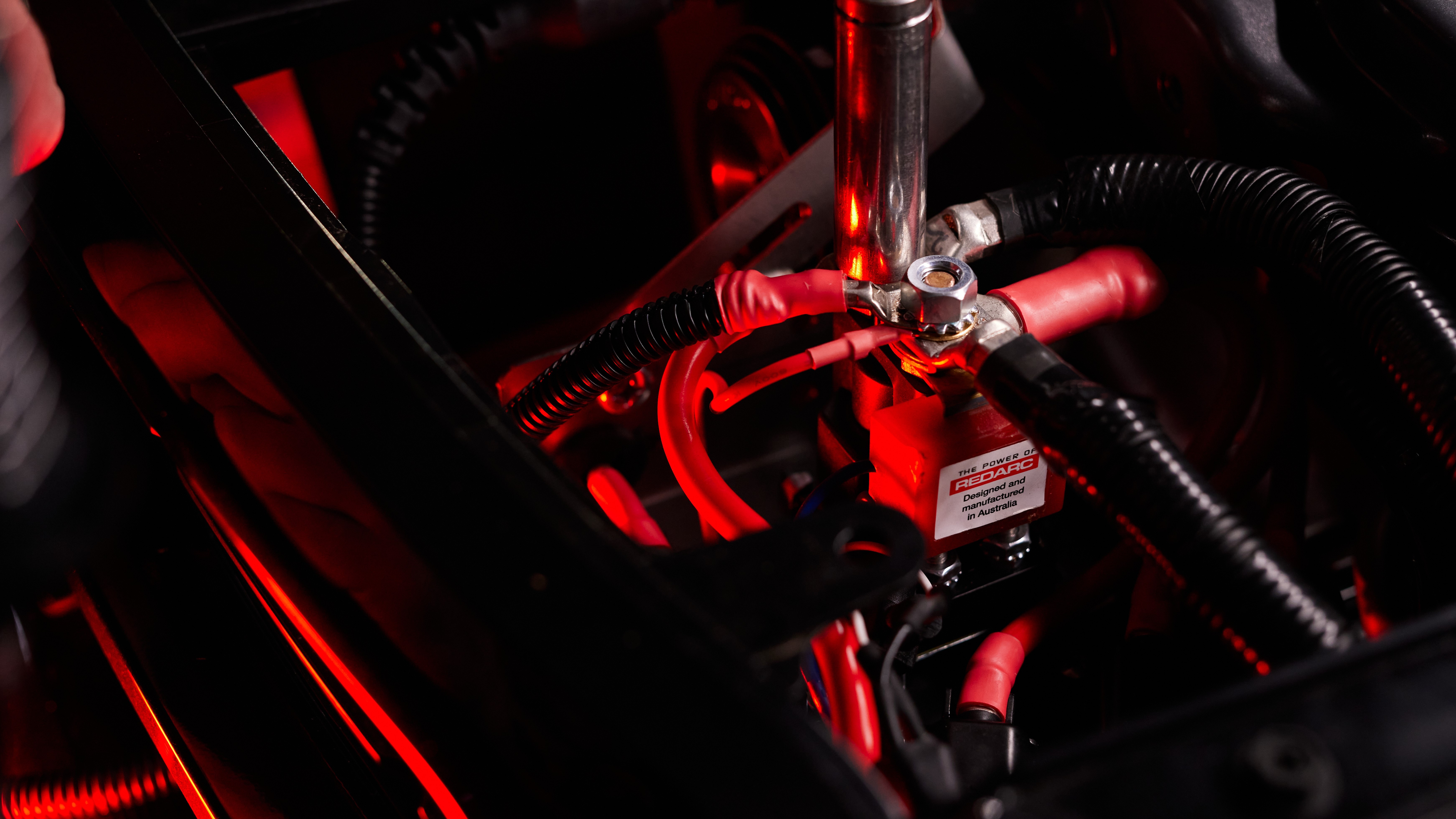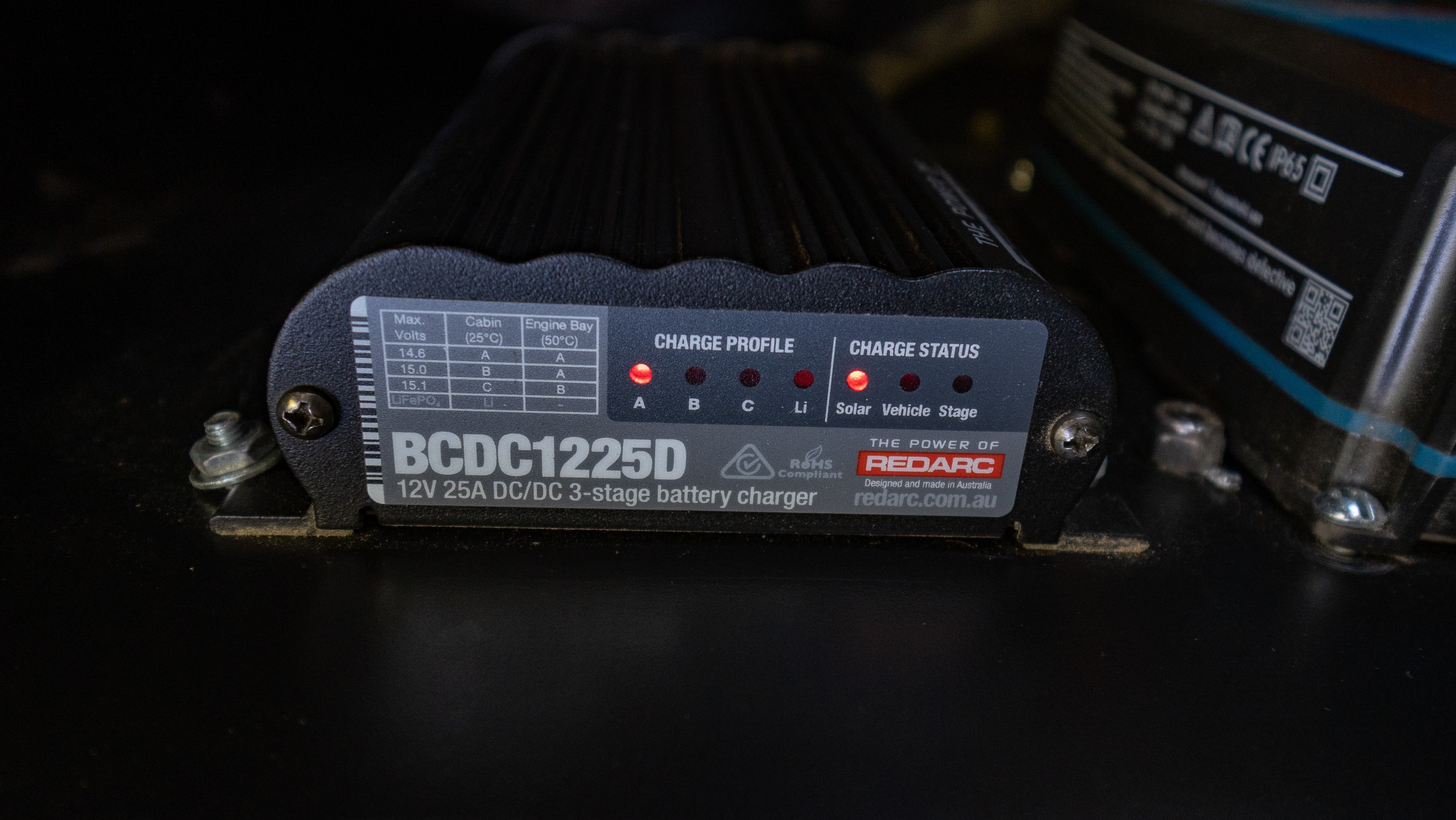So, you’re looking at a dual battery setup for your vehicle. Maybe you’ve thought about all the necessary considerations such as the type of vehicle you’re driving, the type of alternator you have, the electrical accessories you want to run from the electrical system and the length time spent off-grid.
In this blog, we’ll delve a bit deeper into why these factors are important as it will help you decide on the best dual battery system you need for your set-up. The two main types of battery solutions on the market are Smart Battery Isolators and Dual Battery Chargers, though REDARC also offers an all-in-one battery management solution, The Manager30.
Smart Battery Isolators
Smart Battery Isolators have been used for a number of years and are an effective approach for using your vehicle’s alternator to charge the second battery whilst the vehicle is running. Its job is to also protect the start battery from going flat by isolating it from the secondary battery when the engine is turned off.
A battery isolator will recognize when the vehicle engine is running, and charge is going to the starting battery via the vehicle’s alternator. It will do this by sensing battery voltage, and when the start battery reaches 13.2 volts on a 12-volt system, it will connect and start charging the secondary battery.


When the engine is turned off, and therefore the alternator is no longer running, once the start battery drops below 12.7 volts, the isolator will disengage the secondary battery. This will stop any loads connected to the auxiliary battery from also draining the battery.
A good analogy for this is to think of the Battery Isolator as a tap between the batteries and the alternator is a pump feeding the start battery. Once the pump (alternator) fills the start battery to a point (13.2v) the isolator detects this and turns on, allowing the feed going into the first battery to pass onto the secondary battery. Therefore, the pump feeds both batteries at the same time.


This type of set-up is recommended for vehicles that have a fixed vehicle alternator, can be installed under the bonnet, and if you’re on a budget. If your set-up meets none of these criteria, the next level up is an In-vehicle battery charger, also known as a DC-DC battery charger.
DC-DC Battery Charger
Generally, an In-vehicle Battery Charger is going to offer more flexibility for your dual battery set-up, not only in terms of correct charging for your specific battery, but also suitability for different alternator types, installation location, and amp size. Some even accept additional power sources such as solar.
Why they are better
The problem with using your vehicle’s alternator as the main charging source for an auxiliary battery is that the majority of vehicle alternators after 2010 do not put out more than about 14V after driving the vehicle for 10 – 25 minutes. Deep cycle batteries, which is what you would use for the secondary battery generally require charging at higher voltages, with the result being the battery will be undercharged from the alternator alone.
Providing the correct charge to a battery is a bit like filling your tank with the correct fuel for your engine. You wouldn’t use diesel in your petrol engine and on the finer end of the scale, you would be better off supplying high octane fuel to a performance petrol engine.


Therefore, a DC-DC battery charger is recommended as it is designed to effectively charge an auxiliary battery to 100%, ensuring the prolonged life of your auxiliary battery. An In-vehicle battery charger achieves this by applying the correct voltage level to achieve a full state of charge and controlling the amount of current flowing into the battery so that it doesn’t charge too quickly which can otherwise cause damage.
An In-vehicle battery charger may also be necessary when you have to install the secondary battery away from the alternator due to space restrictions under the bonnet as a dc-dc battery charger can overcome voltage drop from long distances. This is becoming increasingly common in modern vehicles.
In addition, quality DC to DC battery chargers are designed to also work with any type of alternator or vehicle voltage as it can operate and sense a wide voltage range.
Finding the correct size dual battery charger
If you are considering going down the DC-DC charger route, then also consider the amps required. Dual Battery Chargers, typically range from 6 – 50 amps. So, which one is right for you?
As a general rule, battery bank sizes of 75-200AH require a 25-amp dual battery charger and then for higher capacity needs, a 40 or 50-amp dual battery charger is recommended. Why is this important?
Excessive current flow into a battery has a range of impacts but the worst s the degradation of battery service life and capacity. That is why it is imperative to work out the accessories you wish to run when you go camping, then work out the battery capacity required and then select the right sized dual battery charger, otherwise, you will just be wasting energy and possibly money.
What about lithium?
Lithium batteries are becoming the new norm and there’s a reason for that. Compared to AGM and lead acid batteries, lithium can be discharged down to just 20% state of charge whereas with AGM or lead acid it is recommended that you don’t discharge below 50%. This means that a lithium rated at 100-amp hours is closely comparable to 200-amp hours of AGM and lead acid in terms of usable power.
Lithium batteries are expensive, there’s no doubt about it, but when you look at the cost in relation to the lifespan of the battery it is clear why. The average AGM/lead acid battery is normally rated at around 500 charge cycles. Compare this to a lithium battery, often rated at 2,000 charge cycles you can assume you’ll get 4 times the battery lifespan.
Another benefit of lithium batteries are their weight. They can often be up to 33% lighter than a similar sized AGM or lead acid battery. This can come in especially handy when your overlanding vehicle has a weight limit, cutting down on battery weight means you won’t have to cut down on luggage, recreational gear or 240v accessories.
The all-in-one solution
If you’re looking for a top of the line, all inclusive system the Manager30 is the way to go. The Manager30 has been designed to incorporate AC, DC and solar inputs to provide the optimal charge for an auxiliary battery. It’s able to charge an auxiliary battery from a vehicle while on the move, it’s a 110 volt charger, a solar regulator, a battery isolator and a load disconnect controller, all of which is accessible via a remote battery monitor screen.
The Manager30 also has green power priority, meaning if 12volt solar power is available, it will be used before topping up the output charging current from another source, either mains if available or DC vehicle power when on the move.
The Manager30 also caters for lithium batteries. As specific charging conditions are required in order to operate correctly The Manager30 has an in-built charging profile to complement these conditions.
The truth about a REDARC dual battery charging kit
So, there you have it, a beginner’s guide to vehicle battery chargers. You can spend hundreds of dollars on high-quality batteries for your touring setup, but even the most expensive battery won’t perform or last very long if it is not charged correctly.
To ensure you get the expected performance and value for money from your batteries, make sure you refer to the battery manufacturers’ data sheet and check out our vehicle selector tool to find the best battery charging solution to make sure you stay in charge.
